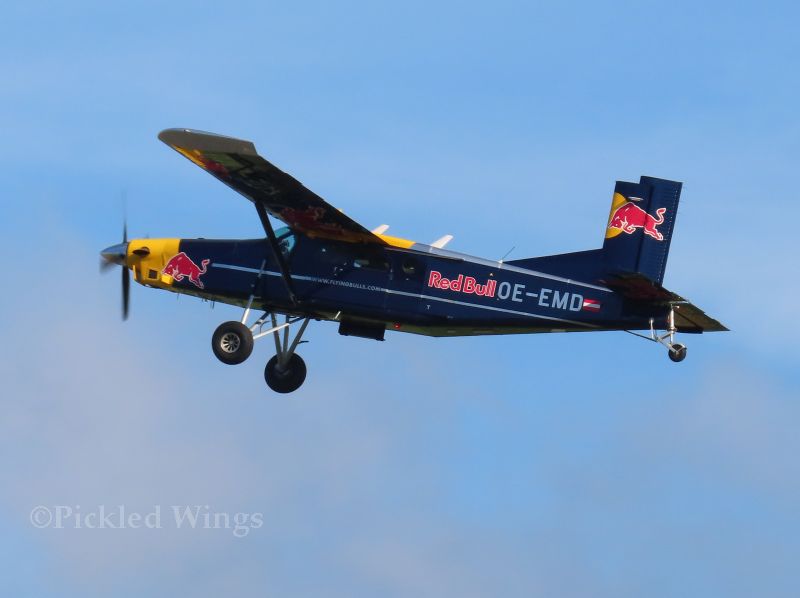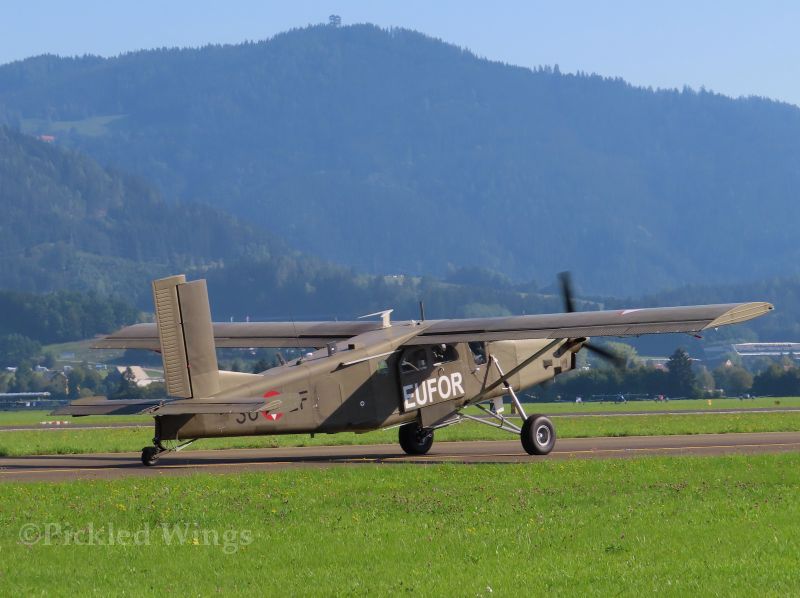The Swiss Signature in the Skies
As quintessentially Swiss as fine cheese, precision timepieces and Swiss Army knives; Pilatus’ PC-6 Porter family of aircraft have been proudly representing the small nation’s aviation industry to the world for over half a century.
Progressing from piston powered early variants to the turboprop versions we see today, the Porter family has assured its longevity and value through unrivaled STOL (Short Take Off and Landing) abilities. Indeed, the Porter is renowned for its ability to operate from areas that would otherwise only be accessible by helicopter.
Able to operate in a wide variety of climatic and weather conditions as well has having been used on every continent on Earth including both polar ice caps, the Porter is still supported by Pilatus more than 50 years after its first flight in 1959.
Let’s spend some time with the Pilatus PC-6 Porter:
Wings for Work and Fun
When a particular type of aircraft earns the “Swiss Army knife with wings” nickname; it’s because that type exhibits an exeptional degree of versatility, flexibility and adaptability. Many aircraft have had that nickname bestowed upon them; it’s particularly appropriate in the case of the PC-6 and not simply because of its country of origin.
The resumé of the PC-6 is indeed a very long one; it would be far less of a challenge to compile a complete list of jobs it hasn’t done and environments where it hasn’t worked than to make a list of those it had.
In purely utilitarian terms, the Porter family has found much favour in work that calls for low speed and and high stability. As such, it’s proven itself very useful in police work, search and rescue, air ambulance, military observation, aerial survey work, firefighting and agricultural work to name but a few.
Outside of hard work, the PC-6 can put its exceptional STOL abilities to work getting more intrepid holiday makers to much less accessible and off-the-beaten-track locales. With the ability to operate from short, semi-prepared strips on the top or slopes of mountains; a porter could get one access to an unforgettable day of skiing or exploring a glacier.
The popularity of the PC-6 as a skydiving platform almost goes without saying. Its impressive stability and capacity to reach jumping heights faster than some other types makes the Porter much sought after for jumping in both civilian and military circles.
The PC-6 can also list acting in its list of accomplishments. The aircraft featured significantly in the 1990 film “Air America” which starred Mel Gibson and Robert Downey Jr. Two Porters were seen in the 1994 film “Drop Zone” which starred Wesley Snipes. A Porter was also seen in the 1995 James Bond film “Goldeneye” which starred Pierce Brosnan.
With as unique a machine as the PC-6 is and the unique flying qualities that were designed into it, it should come as no surprize that it has been used to set a number of records over the years:
In 1960, the prototype set a record for the highest landing by a fixed wing aircraft at 5,750 metres when it set down on the Dhaulagiri glacier in Nepal.
A PC-6/A2-H2 set the world altitude record for aircraft of its weight class at 13,485 metres in 1968.
An Australian army PC-6/B1-H2 set the record for longest distance flown in a straight line when it was flown 3,893 kilometres from the west coast to the east coast of Australia.
1998 saw a PC-6/B2-H4 used to set the world record for banner towing by pulling a 1,500 square metre banner over Bremen, Germany.
In 2001, an American registered PC-6/C-H2 was used in the setting of three records. It set a record for the most take offs and landings by one aircraft in a 24 hour period in support of a skydiver setting a record of 500 jumps completed in 24 hours. The same Porter was used to set a record for the most consecutive take offs and landings in a 24 hour period with the same pilot at the controls. The result was 424 take offs and landings over 21 hours.
The Porter Family
The Pilatus Porter family covers around 20 variants, most of which were created by modifying earlier versions. In the most general of senses, the best way to look at this aircraft family is through the divide of piston engine and turboprop engine powered versions.
The Piston Porters: The PC-6 340, 350, PC-8 and PC-6D
The earliest member of the Porter family was PC-6 340. The basis of this name is in the Lycoming 340 horsepower piston engine it possessed. The PC-6 340 was built in two subvariants, the 340-H1 and 340-H2. The 340-H1 differed from the baseline 340 in having a modified landing gear design and a somewhat increased maximum takeoff weight from just under to just over 2,000 kg. the 340-H2 saw the maximum takeoff weight increased to 2,200 kg. With the introduction of a Lycoming 350 horsepower engine to the design, the 340 became the 350 with coresponding H1 and H2 subvariants.
These early configurations of the PC-6 are truly rare sights owing not only to the fact that Pilatus made less than 100 piston powered machines before switching the PC-6 to turboprop engines, but also due to the fact that most surviving piston engine porters were converted to turboprop engines at somepoint in their lives.
1967 saw the debut of the PC-8 Twin Porter, an unsuccessful attempt two add a two engine variant to the family. Work on the PC-8 was halted in 1969. The last chapter of the PC-6 story that involves a piston engine was written in 1970, when the PC-6/D debuted. Powered by a Lycoming turbocharged piston engine, only one PC-6/D was ever built. It is perhaps unsurprising that this variant was not successful given that the Porter had been running very well on turboprop engines for nearly a decade before the PC-6/D first flew.
The Turbo-Porters: The PC-6 A, B, C and AU-23
Pilatus was quick to shift the Porter from piston to turboprop power early in the type’s life. The first prototype of a Turbo-Porter took place in 1961, two years after the first flight of the initial piston powered Porter prototype.
The first generation of the Turbo-Porters were the PC-6/A versions. This group consisted of the baseline PC-6/A as well as A1 and A2 sub variants. All three versions drew their power from members of the French made Turbomeca Astazou engine line.
The second generation, and by far most numerous and popular, of the Turbo-Porter line debuted in 1964 when the first PC-6/B took to the air with a Pratt & Whitney Canada PT6A engine driving the propeller. Both aircraft and engine were relatively new when they first flew together in 1964 and both have gone on to become legendary machines in their own ways. Indeed, the reliability of the PT6A engine family has likely had much to do with the longstandng reputation for reliability that the PC-6 aircraft possesses.
The B version of the Turbo-Porter encompasses the baseline PC-6/B and three subvariants; the B1, B2-H2 and the B2-H4. The B, B1 and B2-H2 are primarily differentiated by the version of PT6A engine they use. By contrast, the B2-H4 is an offshoot of the B2-H2 with a strengthened internal structure and refined flying surfaces that include and enlarged tail and modified wingtips. These modifications resulted in the B2-H4 having a significantly higher maximum takeoff weight compared to the B2-H2.
The third generation of Turbo-Porter is the PC-6/C, the prototype of which flew in 1965. This was an American license built member of the Porter family by the Fairchild Hiller Corporation with a view to providing American forces in Vietnam with a multi-purpose armed STOL aircraft. The C version consisted of the C prototype along with the C1, C2-H2 and the AU-23 Peacemaker, all of which took power from different versions of the Garrett TPE311 engine.
The AU-23 Peacemaker was the U.S. Air Force name for 15 PC-6/C aircraft which were tested for combat use between 1970 and 1972. Ultimately, due to insufficient speed and structural failures, the aircraft were not accepted for combat by the USAF. However, the 15 aircraft were provided to the Royal Thai Air Force in 1972 under the Military Assistance Program.
The Porter Today and Learning More
In August of 2017, Pilatus announced that the PC-6 production line would close in 2019. However, they also announced the intent to continue supporting the aircraft for at least 20 years past that point. A total of around 600 PC-6 aircraft had been built when production ended in early 2019 and well over 200 are known to be actively flying in militaries or on civil registers worldwide.
The PC-6 is a much sought after aircraft and does very well for itself on second hand markets. If you see one, it will most likely be a version of the PC-6/B line, though the particular aircraft you see may not have started out that way. It has not only been piston powered Porters that were converted to turboprop engines, more than a few Astazou and Garrett powered versions have been converted to Pratt & Whitney engines and redesignated as B models.
As it stands, unless a new aircraft type of similar or better STOL abilities comes to be, members of the PC-6 family are very likely to be seen still earning their keep in practical ways when the design marks its centenary.
If you wish to know more about the PC-6, it’s history, development and the current disposition of known extant airframes, this website is a wealth of such information: Link to pc-6.com
This link will take you to a .pdf document about American built Turbo-Porters and their use over Vietnam by the Air America group in the early 1970s: Link to article about PC-6 in Air America service





